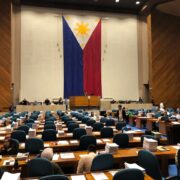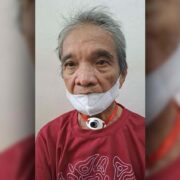The safe spaces painted by Mark Jeffrey Santos
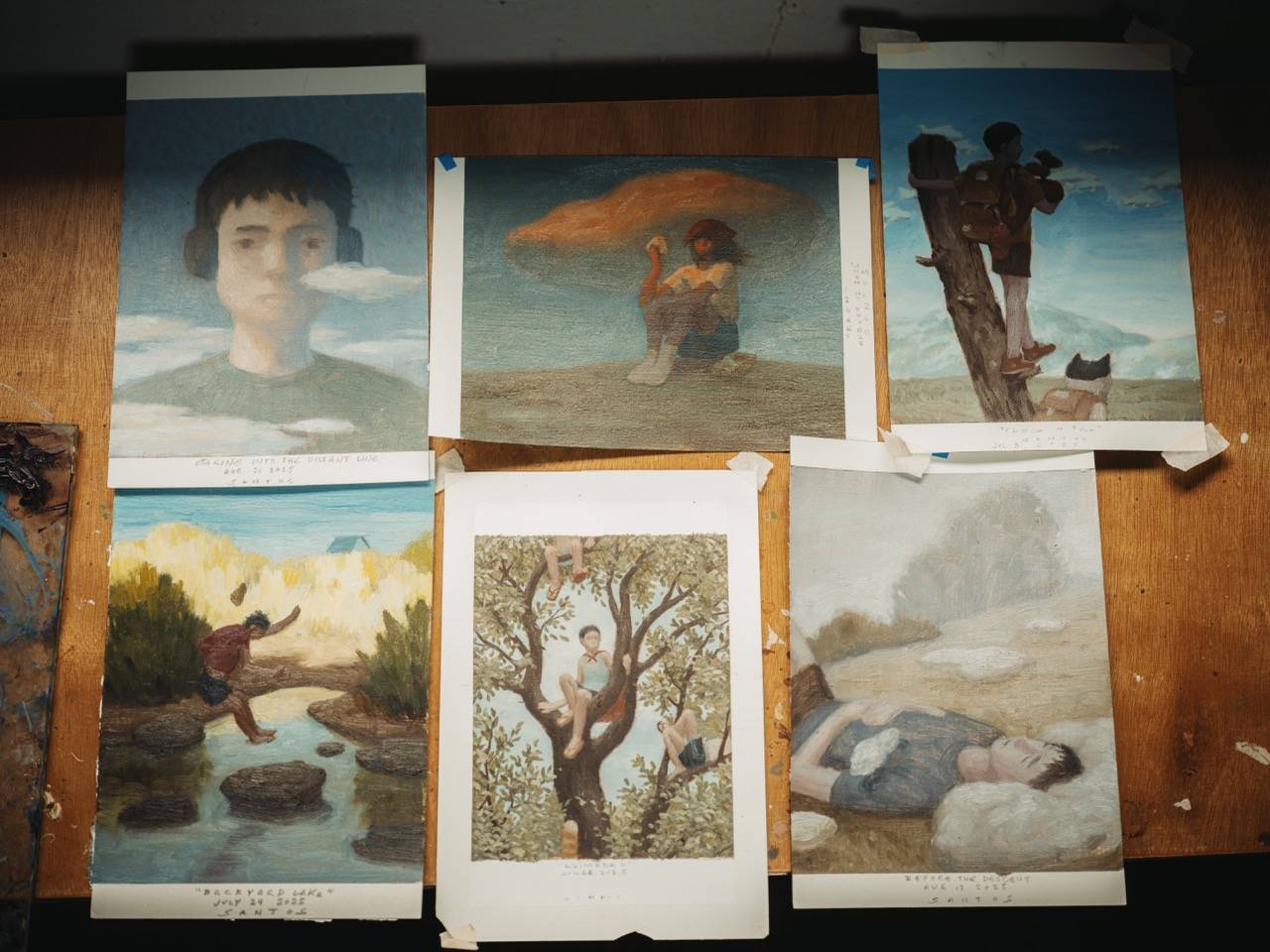
“These days, when the world feels increasingly chaotic, having a safe space where you can simply be yourself—no judgment, no pressure—is more important than ever,” says Filipino visual artist Mark Jeffrey Santos. In an era often described by psychologists as one of disconnection and an “epidemic of loneliness,” his words resonate with particular urgency.
With a studio practice rooted in street art and deeply influenced by Western pop surrealism, as well as, to some extent, the Japanese Superflat movement, the artist—better known as Mr. S—has explored themes of solitude, silence, and self-care within his distinctive pictorial universe.
Santos’ psychological landscapes unfold as islands, secret gardens, or mountains that seem to exist within dreams. His spaces exude a quiet delicacy, evoking both nostalgia and stillness. More than imagined terrains, these worlds articulate a state of being—utterly present, tranquil, at ease in solitude: alone but not lonely, open and willingly vulnerable. If his world had a sound, it might be the gentle sigh of a breeze, the whisper of wind, the soft rustle of bamboo.
Thresholds and safe spaces
For Santos, the practice of world-building and visual storytelling offers pictorial “thresholds”—portals to safe spaces for healing and solitude.
Borrowing the words of author Rick Rubin—“There’s so much wisdom in nature that when we notice it, it awakens possibility within us. It is through communing with nature that we move closer to our own nature”—Santos’s own communion with the natural world offers a reprieve from society’s overstimulation and chronic dependence on digital technology.
His imagined spaces and scenarios serve as invitations to heal amid what Elizabeth M. Ross, in her Harvard article “What Is Causing Our Epidemic of Loneliness and How Can We Fix It?”, describes as the “epidemic of loneliness,” a global mental health crisis that permeates all demographics.
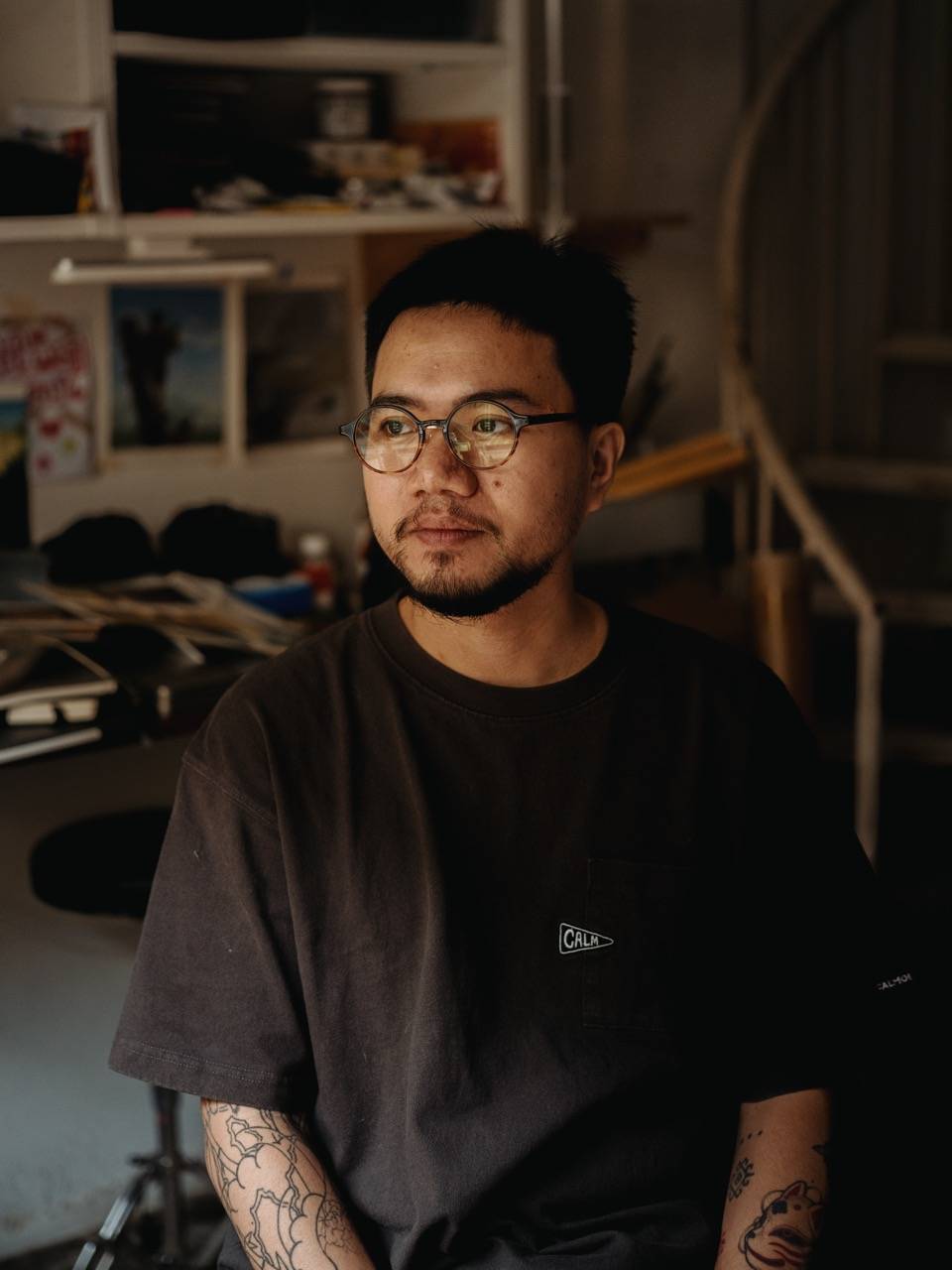
Loneliness, she writes, is “a subjective distressing experience that results from perceived isolation or inadequate meaningful connections, where inadequate refers to the discrepancy or unmet need between an individual’s preferred and actual experience.”
And in a society suffering from the effects of this epidemic of loneliness, a return to nature may offer a path toward healing.
“Sa panahon ngayon, we are constantly bombarded with information. Minsan, ok din na mag-step back muna tayo mula sa mga screens natin at i-appreciate kung ano yung nasa harap natin. Minsan, ok din ‘yong may mga moment na tahimik lang,” Santos says, reflecting on his relationship with nature, silence, and his inner self.
In this interview, Santos shares his fascination with nature and how his hikes became the central inspiration for his solo exhibition “Among Quiet Peaks” at the Museum of Art and History in Lancaster, California.
Can you share the big idea behind your exhibition “Among Quiet Peaks”?
Months before the show, active ako sa pagha-hike at lagi rin akong bumibisita sa parents ko sa Antipolo. Lagi din akong may dalang camera noong mga panahong iyon, kaya nakapag-ipon ako ng mga photos na para sa akin ay may potential na maging painting. Isa sa mga litratong nakunan ko ay ‘yong mga batang nakatambay sa taas ng puno, na para bang napaka-peaceful nilang nagpapalipas ng oras.
Na-realize ko rin na halos lahat ng litratong nakuha ko ay nasa bundok—doon nanggaling ang concept ko para sa show: mga experiences sa taas ng bundok.
Many of your paintings feature solitary figures in serene landscapes. Why is solitude such an important theme for you?
I’m really interested in quiet sceneries from imagination—there’s something visceral about them. Minsan may storya ‘yong image, minsan naman it’s more about evoking a certain feeling—usually calmness, and sometimes based siya sa experiences ko. It either makes you sad or makes you happy. I’m just naturally drawn to that kind of vibe.
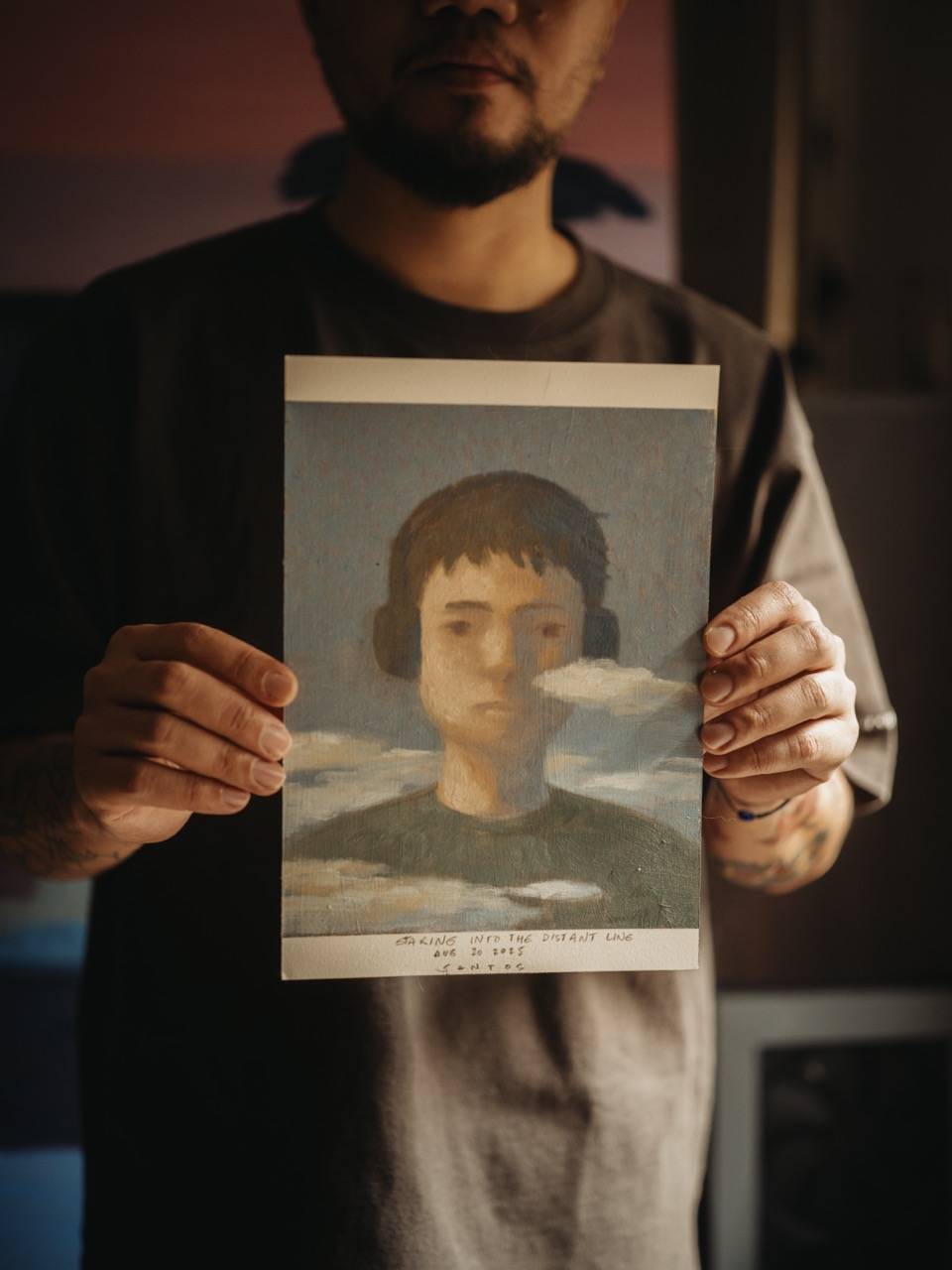
What inspired you to choose the artist name “Mister Sasquatch”?
Nung napagdesisyunan kong maging artist, I started out as an aspiring street artist. Sa culture ng street art, halos lahat sila ay may alias. Mr. S yung napili kong pangalan noon dahil mukhang sasquatch yung ginuguhit ko nung time na yun. Doon na ako nakilala ng mga tao.
Pero ngayon, I don’t consider myself a street artist anymore, kaya mas ginagamit ko na yung real name ko—lalo na pagdating sa gallery exhibits.
How long did it take you to develop the distinctive pictorial universe of Mr. S/Mark Jeffrey Santos?
Nag-start akong magpinta noong 2013, so I’ve been developing my style for more than 10 years now. I wouldn’t say na mundo pa rin siya ni Mister Sasquatch. My art is constantly changing, just as I am also changing. There’s still a lot to explore, so ayoko rin makulong sa iisang concept lang.
The recurring male character in your works, as Mr. S—would you say he’s a self-portrait?
Usually, galing din sa personal experiences ko yung mga paintings ko. Pero it doesn’t mean na I’m portraying myself through the character—parang siya lang yung gumaganap na bida sa storyang gusto kong sabihin.
Tell us about your creative process. How do you begin and complete an artwork or an entire series?
I’d like to think that my art is not a straight line. There are so many factors that influence how I come up with ideas. Sometimes the images just pop up in my mind, sometimes it’s a lyric from a song, or even just from sitting quietly in my studio. Dumadating lang talaga sa akin nang random. Then I take note of it or make a quick sketch para hindi ko makalimutan.
What do you aim to achieve most in your studio practice?
I still have a lot to learn as an artist, and right now, I’m still obsessed with the technical side of painting. Tingin ko, impossible talagang ma-perfect ang pagpipinta. Siguro, mas gusto ko lang talagang mag-experiment pa. I think ganun naman talaga ang art—it’s more about exploration and feeding your curiosity.
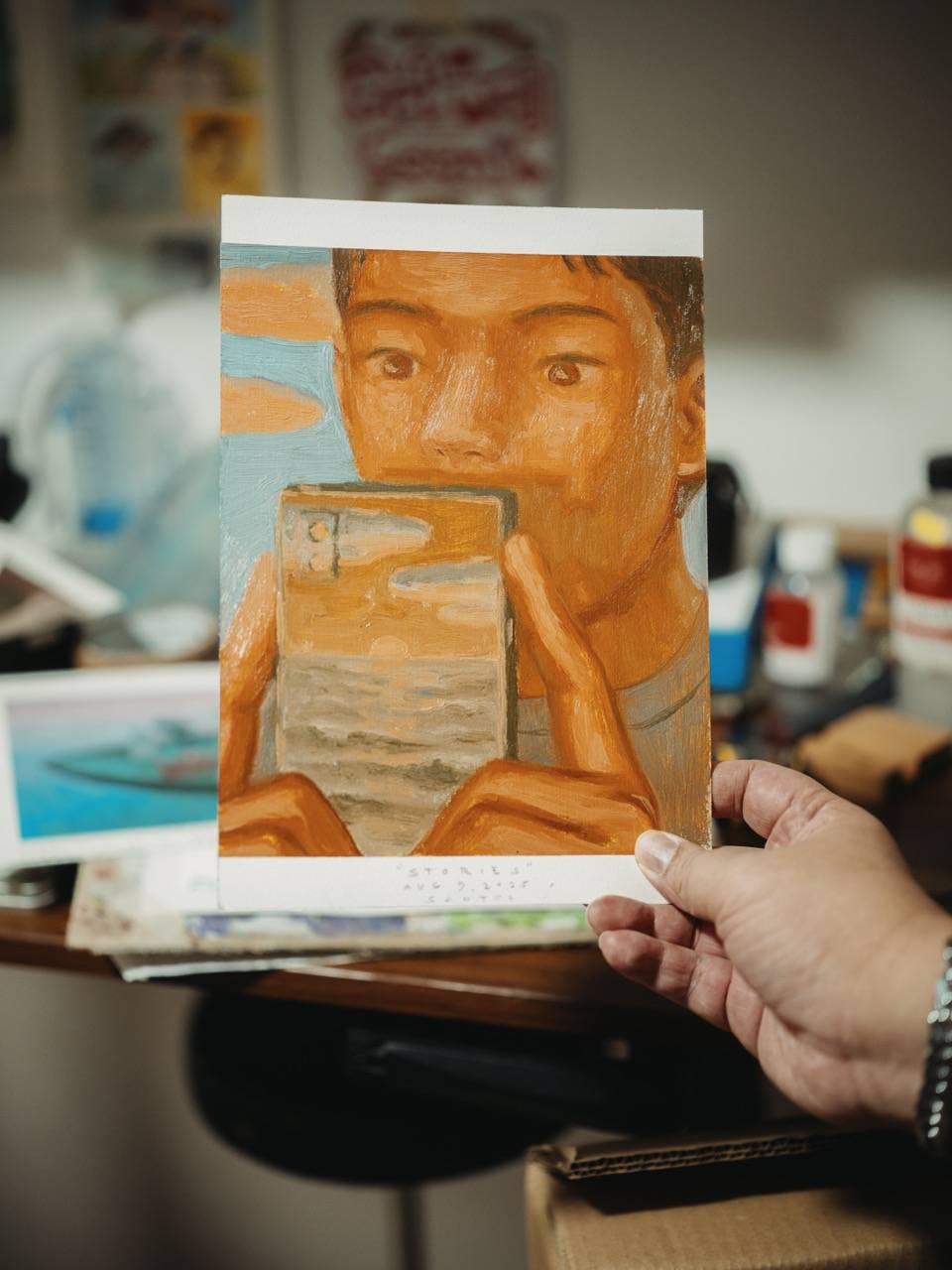
Let’s talk about your background as a visual artist. How did you discover your path in art?
Bata pa lang ako, alam na ng parents ko na mahilig na akong mag-drawing. Kaya pagdating ko ng college, in-enroll nila ako sa Mapúa para mag-aral ng Multimedia Arts. Doon ako namulat sa iba’t ibang klase ng art, at halos lahat natry ko noong college. Pagkatapos kong mag-graduate, nagtrabaho ako bilang graphic artist, pero naramdaman kong hindi talaga para sa akin yung trabaho na ’yon.
Sakto naman na may kaibigan akong nagtatrabaho saNOVA Gallery, at doon ako na-expose sa fine art—doon din ako unang nakapag-exhibit.
Who are your greatest artistic influences? And among your contemporaries, whose body of work do you admire?
There’s a lot. I used to look at a lot of Juxtapoz and Hi-Fructose magazines, as well as ffffound.com, to name a few. So I guess it’s safe to say that I’ve been influenced by Western pop surrealism. Some of my art heroes are Andrew Hem, Aron Wiesenfeld, Jeff Soto, and Yoshitomo Nara.
Ilang magagaling na artists na kilala ko ngayon ay sina Red Salonga, Donsuki, Pat Frades, Rei Martin, Wipo, Reuel Rendon, Pattpiha, Lyndon Maglalang, TRNZ, Is Jumalon, Blic, Mimaaaw, Reen Barrera, Luke Alarcon, Shannah Orencio, at Edrick Daniel—at marami pang iba.
If you could leave us with one quotable line about your practice as a visual storyteller, what would it be?
For me, art is a lifelong journey of constant exploration—not only of techniques, but also of self-discovery.




